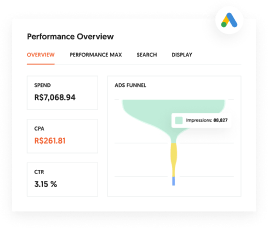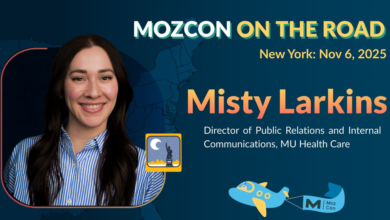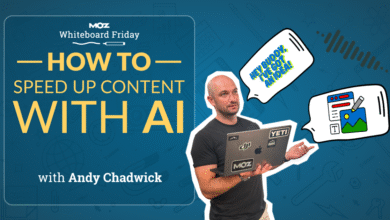Digital Marketing News Roundup – July 2025

Another month, another avalanche of platform updates and game-changing industry developments.
Not all the updates will move the needle for your business, but some absolutely will. That’s why I cut through the noise to bring you the changes that actually matter for marketers and agencies.
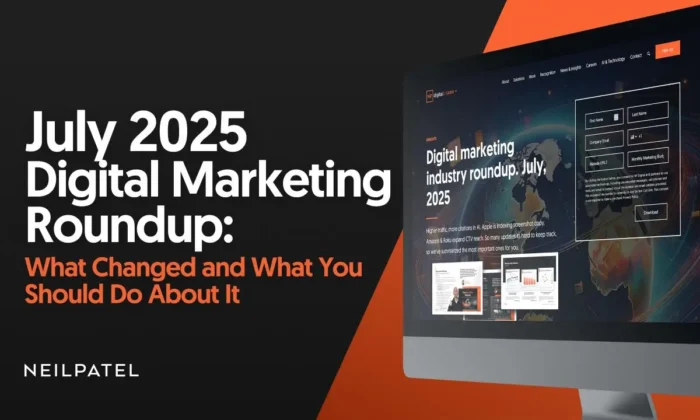
These 20 trends from July 2025 are reshaping how we think about visibility, attribution, and growth. Let’s take a closer look.
Key Takeaways
- Search is evolving fast: AI citations favor high-traffic sites, while Google adds audio responses and Instagram posts show up in search results.
- Attribution is getting better: Meta restores advanced mobile tracking, while Apple now indexes screenshot text for app store optimization (ASO).
- Automation is winning: Manual campaigns are dying as platforms push AI-driven optimization.
- Trust drives B2B: LinkedIn data shows 94 percent of marketers rank trust as the top driver of brand success.
- Video dominates everywhere: From Instagram Trial Reels to connected TV partnerships, video content rules.
- Download the full roundup report for July 2025 at the NP Digital website.
Search and AI Evolution
The search world is transforming faster than most marketers can keep up. Here’s what’s changing and why it matters.
High-Traffic Sites Get More AI Citations
What happened: Ahrefs analyzed mention share versus website traffic and found something crucial. Higher-traffic websites get cited more frequently in AI-generated responses. This creates a powerful feedback loop where traffic attracts more traffic through AI mentions.
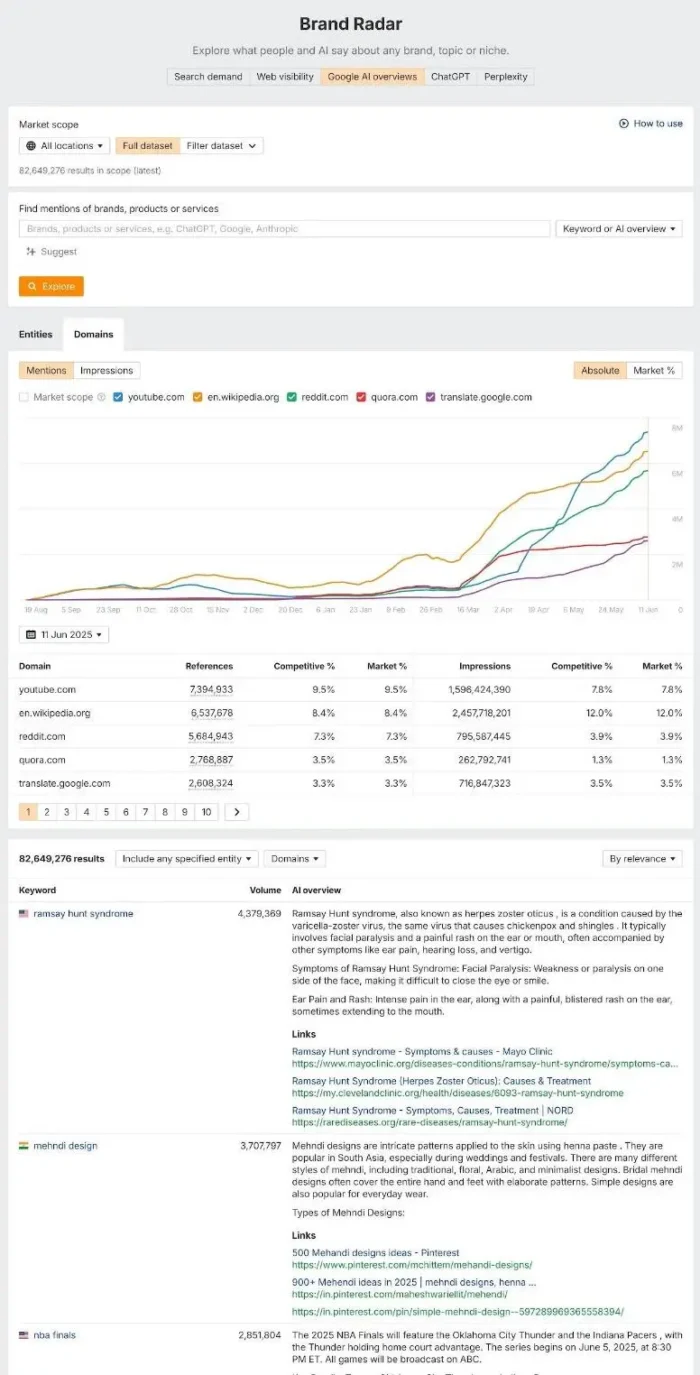
Why it matters: We’re seeing the birth of a new authority signal. AI platforms like ChatGPT, Perplexity, and Gemini are moving beyond content quality, favoring sources that already get traffic and engagement. If you’re not driving consistent traffic, you’re essentially invisible to AI systems that millions of people use daily.
What to do:
- Prioritize strategies that grow traffic holistically across all channels.
- Track brand mentions in AI platforms as a new key performance indicator (KPI) alongside traditional search rankings.
- Repurpose your highest-traffic content across multiple formats and platforms.
- Build out topic clusters around your most successful content themes.
Google Adds Audio Search Responses
What happened: Google launched “Audio Overviews”—AI-generated spoken responses that sound like podcast conversations between two voices. One explains the topic, while the other asks clarifying questions, making complex information more digestible.
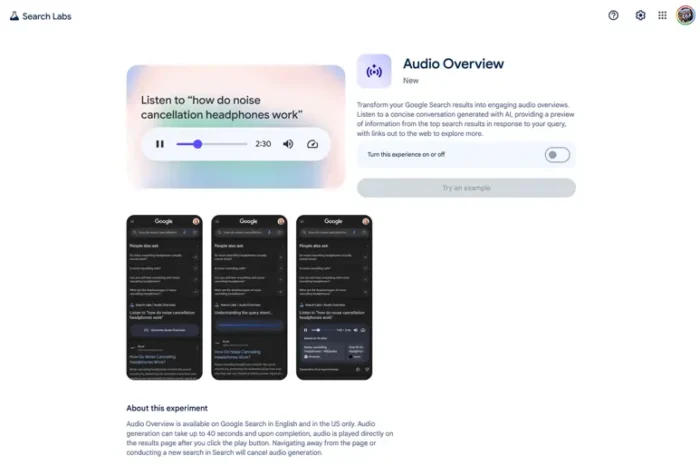
Why it matters: Don’t confuse this with text-to-speech. It’s a fundamental shift toward conversational search experiences. Users can now get rich, contextual answers without reading a single word. For content creators, this means your content needs to work in multiple formats.
What to do:
- Write with conversation in mind, using natural language and clear explanations.
- Structure content with clear Q&A sections that can be easily extracted.
- Optimize for featured snippets, as these often feed AI Overview systems.
- Test how your key topics sound when read aloud, and adjust accordingly.
Instagram Posts Show Up in Google Search
What happened: Starting July 10, Instagram began allowing search engines to index public content from professional accounts. Your Instagram posts can now appear in Google search results, extending reach beyond Instagram’s internal algorithm.
Why it matters: Social media keeps developing as an SEO channel. This bridges the gap between social engagement and search visibility, giving brands a new way to rank for competitive keywords through social content.
What to do:
- Audit your Instagram content strategy with SEO in mind.
- Use keyword-rich captions that would make sense in search results.
- Create carousel posts that provide substantial value and context.
- Consider Instagram posts as part of your broader content distribution strategy.
Google’s Search Updates Continues
What happened: Google initiated its second core update of 2025 in June, with effects still rolling out. Early data suggests this update coincides with changes to Google’s Gemini AI models, affecting both traditional rankings and AI Overview visibility.
Why it matters: Core updates assess long-term content quality, and this one seems particularly focused on how content performs in AI-driven features. Sites optimized only for traditional search may see fluctuations.
What to do:
- Monitor your AI Overview visibility alongside traditional rankings.
- Focus on E-E-A-T principles: experience, expertise, authoritativeness, and trustworthiness.
- Avoid making reactive changes to short-term ranking fluctuations.
- Double down on creating genuinely helpful, user-centric content.
Link Building Gets Smarter in 2025
What happened: Search Engine Land outlined 12 critical link-building best practices for 2025, emphasizing that volume-based backlink strategies are deadweight. The new approach focuses on quality over quantity, contextual relevance, and unlinked brand mentions over raw domain authority.
Why it matters: Link building used to be a numbers game. Now it’s about authority and authenticity. With AI search gaining popularity, the focus has shifted from “who links to you” to “why they link to you” and whether those links enhance your reputation across multiple discovery platforms.
What to do:
- Shift from volume-based outreach to relationship-driven link building.
- Focus on unlinked mention outreach to convert brand citations into backlinks.
- Build editorial partnerships with industry-aligned publications and thought leaders.
- Create content that naturally earns links through genuine value and shareability.
- Treat link building as an ongoing authority-building strategy, not a one-time project.
Paid Advertising Evolution
Advertising is getting more sophisticated, with better attribution and expanded inventory. Here’s what’s changing.
Amazon and Roku Transform Connected TV
What happened: Amazon DSP now integrates Roku’s connected TV inventory, giving advertisers access to approximately 80 million U.S. households, over 80 percent of the connected TV (CTV) market. Early tests show a 40 percent increase in unique viewer reach and a 30 percent reduction in ad repetition.
Why it matters: This partnership creates the largest CTV advertising platform in the U.S., combining Amazon’s rich consumer data with Roku’s massive reach. For the first time, brands can use actual shopping behavior to target audiences across major streaming platforms.
What to do:
- Evaluate your current CTV strategy and consider expanding into this unified platform.
- Use Amazon’s shopping signals to create more precise audience segments.
- Develop creative specifically for the combined Prime Video and Roku audience.
- Track unique reach metrics to optimize for audience expansion and not just frequency.
Meta Restores Advanced Mobile Measurement
What happened: Meta re-enabled Advanced Mobile Measurement (AMM), allowing opted-in advertisers to access device-level attribution data. Starting July 21, Meta’s “Engaged Views” count like clicks in attribution models, aligning with other advertising platforms.
Why it matters: Mobile marketers finally have the granular data they’ve been missing. With device-level attribution and better understanding of user journeys, campaign optimization becomes significantly more precise.
What to do:
- Opt into Meta’s AMM by accepting the terms (requires admin access).
- Integrate with your mobile measurement partner (MMP) for unified reporting.
- Start optimizing for Engaged Views as meaningful conversion signals.
- Use device-level data to identify highest-value user segments.
Meta Phases Out Manual Campaigns
What happened: Meta is rebranding Advantage+ Shopping to Advantage+ Sales, consolidating sales, app, and lead campaigns into one automated format. Manual campaign setup is being phased out, though some targeting controls remain.
Why it matters: This signals Meta’s complete shift toward AI-driven advertising. Manual bid management and granular targeting controls are becoming obsolete as they’re replaced by machine learning optimization.
What to do:
- Transition existing manual campaigns to the Advantage+ format.
- Focus optimization efforts on creative quality and audience signals rather than manual controls.
- Use broad targeting to unlock the full benefits of Meta’s AI.
- Monitor performance closely during the transition and adjust creative accordingly.
Amazon Prime Day Doubles Down
What happened: Prime Day 2025 extended to four days (July 8-11), doubling its usual length. New deals dropped every five minutes, giving brands more time to optimize but potentially diluting urgency.
Why it matters: If Amazon sticks with this four-day model, the extended window allows for real-time campaign optimization and better inventory management, but brands need to maintain momentum across four days instead of creating a two-day sprint.
What to do:
- Implement hourly performance reviews and budget reallocation.
- Prepare multiple creative assets to refresh messaging throughout the event.
- Set different KPIs for each day to maintain focus and urgency.
- Use the extended timeframe for better attribution analysis.
Social Media and Content Strategy
Social platforms are evolving into search engines, discovery platforms, and attribution tools rolled into one. Here’s how to adapt.
Sephora Succeeds With Experiential Marketing
What happened: Sephora launched its “Delivered to Beauty” campaign, offering $20 Lyft credits to bring customers to select stores during July 7-10. The initiative included in-store activations like giveaways and makeup demos, blending digital engagement with physical experiences.
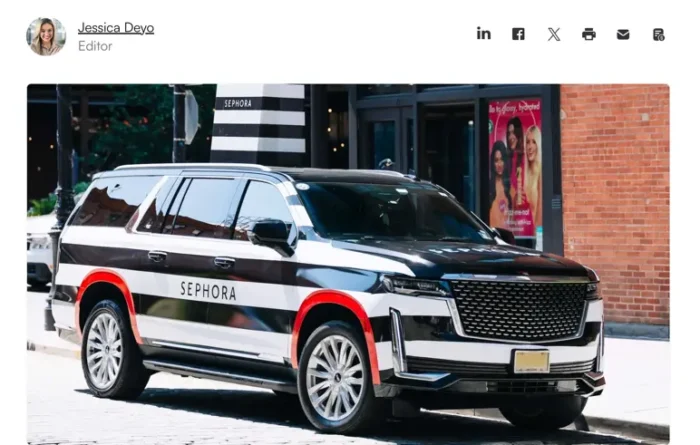
Why it matters: This shows how experiential marketing can bridge online buzz and in-store traffic. Strategic brand partnerships can unlock new audiences and create unexpected touchpoints in the customer journey, but only when supported by solid digital infrastructure.
What to do:
- Plan experiential campaigns with digital amplification in mind from day one.
- Create optimized landing pages and campaign-aligned content for every activation.
- Use local SEO tactics to capture search traffic during events.
- Measure both foot traffic and digital engagement to calculate true ROI.
Instagram Trial Reels Show Results
What happened: Instagram’s Trial Reels feature lets creators test content with non-followers before posting to their main feed. Data shows 40 percent of creators using Trial Reels post more frequently, with 80 percent seeing increased reach among non-followers.
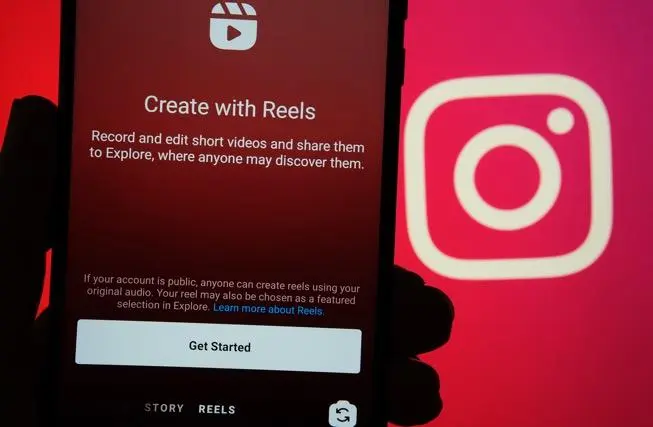
Why it matters: This is like A/B testing but for social algorithms. Instead of guessing what will perform, creators can get real feedback from fresh audiences within 24 hours.
What to do:
- Use up to 20 Trial Reels daily to test different content formats and topics.
- Track engagement patterns to identify what drives reach beyond your existing audience.
- Convert successful trials into regular posts and build content calendars around proven winners.
- Include Trial Reel performance in your social media reporting.
Pinterest Boosts Visual Search
What happened: Pinterest released new guidance for brands to align their content with AI-powered visual search trends. Key recommendations include updated catalogs, lifestyle imagery, and Performance+ targeting for broader reach.
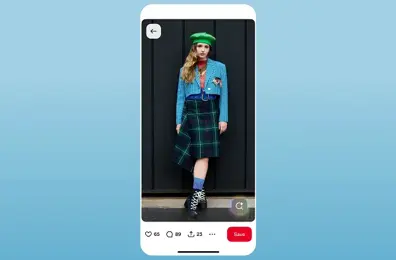
Why it matters: With 570 million monthly active users, Pinterest remains an underutilized search channel for many brands. These updates make it easier to appear in visual searches without manual keyword optimization.
What to do:
- Audit existing Pinterest catalogs for accuracy and completeness.
- Test lifestyle imagery alongside product shots to increase discovery.
- Enable Performance+ targeting to expand reach beyond manual audience selection.
- Treat Pinterest as part of your omnichannel search strategy (not just social media).
LinkedIn Emphasizes Business Influencers
What happened: LinkedIn released a 22-page guide highlighting the power of B2B creators and influencer partnerships. It shows that B2B buyers actively seek out creator content as trusted resources throughout their purchasing journey.
Why it matters: B2B influence goes beyond follower counts to credibility and industry expertise. Decision-makers trust individual voices more than brand messaging in complex B2B purchases.
What to do:
- Identify industry-specific creators who resonate with your target audience.
- Focus on value-driven content that addresses real buyer needs and challenges.
- Use video and thought leadership formats to amplify reach and engagement.
- Measure influence through pipeline impact, not just engagement metrics.
Platforms and Technical Updates
Behind-the-scenes changes are set to affect how your content gets discovered and measured.
Apple Indexes Screenshot Copy
What happened: Apple now uses visible text in App Store screenshot captions as searchable metadata. This means your visual assets directly impact search rankings and app discovery.
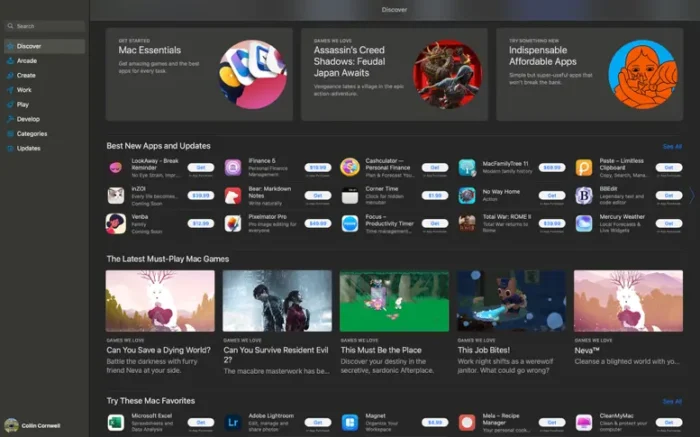
Why it matters: Screenshot captions were previously just conversion tools. Now, they’re discovery tools. Apps can rank for keywords included in their visual content, expanding ASO beyond traditional metadata fields.
What to do:
- Add relevant keywords to screenshot captions while maintaining conversion focus.
- Avoid duplicating keywords across metadata fields, but strategically repeat key terms.
- Use captions to reinforce core product benefits and use cases.
- Track keyword performance changes after implementing caption optimization.
Cloudflare Blocks AI Crawlers by Default
What happened: New Cloudflare users (representing about 20 percent of the internet) must now explicitly opt in to allow AI crawlers to access their websites for content scraping and model training.
Why it matters: Millions of websites could be excluded from AI search results and language model training unless they take action. This creates a potential visibility gap for brands that don’t adjust their settings.
What to do:
- Review your Cloudflare settings and enable AI crawler access if you want AI visibility.
- Consider the trade-offs between content protection and AI platform inclusion.
- Monitor AI citation tracking (like Ubersuggest’s upcoming feature) to measure impact.
- Treat this like submitting sitemaps to search engines. You’re telling AI platforms what to crawl.
B2B and Trust Building
B2B marketing is shifting toward relationship-building and credibility over pure lead generation.
LinkedIn Data: Trust Drives B2B Success
What happened: LinkedIn’s latest research shows 93.7 percent of B2B marketers say trust is the top factor for brand success. Customer recommendations outrank product features as purchase drivers.
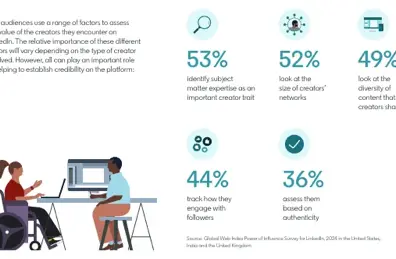
Why it matters: With AI-generated content and automated outreach rising in popularity, authentic human validation becomes the ultimate differentiator. Trust has gone from a “nice to have” to a competitive necessity.
What to do:
- Prioritize collecting and amplifying authentic customer testimonials.
- Integrate social proof into every stage of your content funnel.
- Use customer success stories in sales presentations vs. just in marketing materials.
- Evaluate your brand messaging to ensure it conveys credibility at every touchpoint.
Ubersuggest Gets AI Search Optimization
What happened: Ubersuggest is rolling out AI Search Optimization reporting in beta, tracking brand mentions and citations across ChatGPT, Perplexity, Gemini, and other AI platforms. The tool monitors visibility, sentiment, and competitive positioning in AI-generated responses.
Why it matters: This addresses a massive blind spot for marketers. You can optimize for Google rankings all day, but if you’re invisible in AI platforms handling billions of queries, you’re missing huge opportunities. This is the first major tool to treat AI visibility as a measurable, trackable metric.
What to do:
- Audit your current brand mentions across AI platforms manually until the tool launches.
- Start optimizing content for AI Overview inclusion using structured data and clear answers.
- Track competitors’ AI citations to identify content gaps and opportunities.
Looking Ahead: What This Means for Marketers
These updates share a common thread: The marketing world is becoming more sophisticated, more automated, and more focused on authentic value.
- The search-everywhere reality is here. Your content needs to perform across Google, Instagram, AI platforms, and voice interfaces. SEO now means search everywhere optimization.
- Attribution is getting better, but complexity is increasing. With Meta’s restored mobile measurement and Apple’s expanded ASO signals, you have more data, but you need better systems to make sense of it.
- AI is becoming the default. From Meta’s automated campaigns to Google’s audio responses, machine learning is handling more of the heavy lifting. Your job is shifting from manual optimization to strategic input.
- Trust and relationships matter more than ever. With automated content and AI-generated responses on the rise, human credibility becomes the ultimate competitive advantage.
The brands that win in this environment won’t be the ones with the biggest budgets or the most sophisticated tools. They’ll be the ones that adapt quickly, test constantly, and focus on creating genuine value across every platform that matters.
Ready to put these insights to work? Let’s talk about how we can help you navigate these changes.

See How My Agency Can Drive More Traffic to Your Website
- SEO – unlock more SEO traffic. See real results.
- Content Marketing – our team creates epic content that will get shared, get links, and attract traffic.
- Paid Media – effective paid strategies with clear ROI.
Are You Using Google Ads? Try Our FREE Ads Grader!
Stop wasting money and unlock the hidden potential of your advertising.
- Discover the power of intentional advertising.
- Reach your ideal target audience.
- Maximize ad spend efficiency.
Source link
